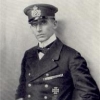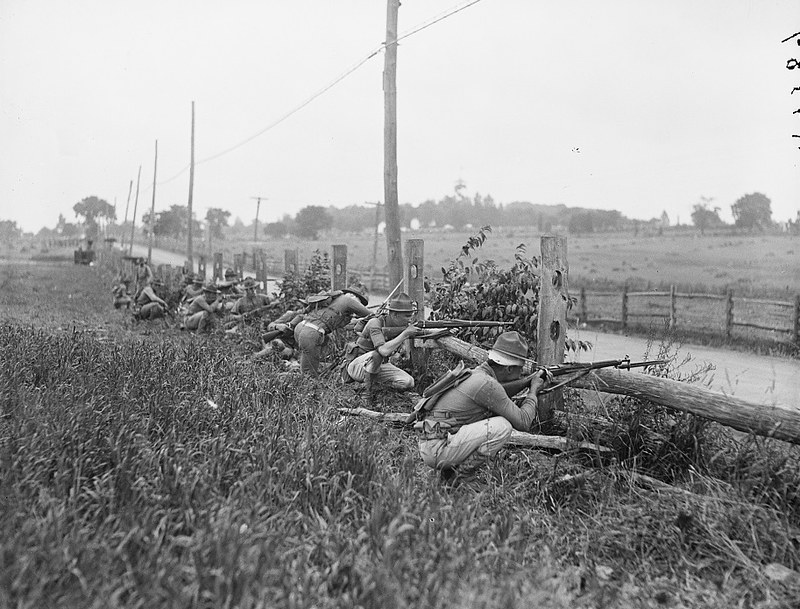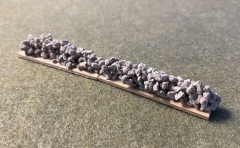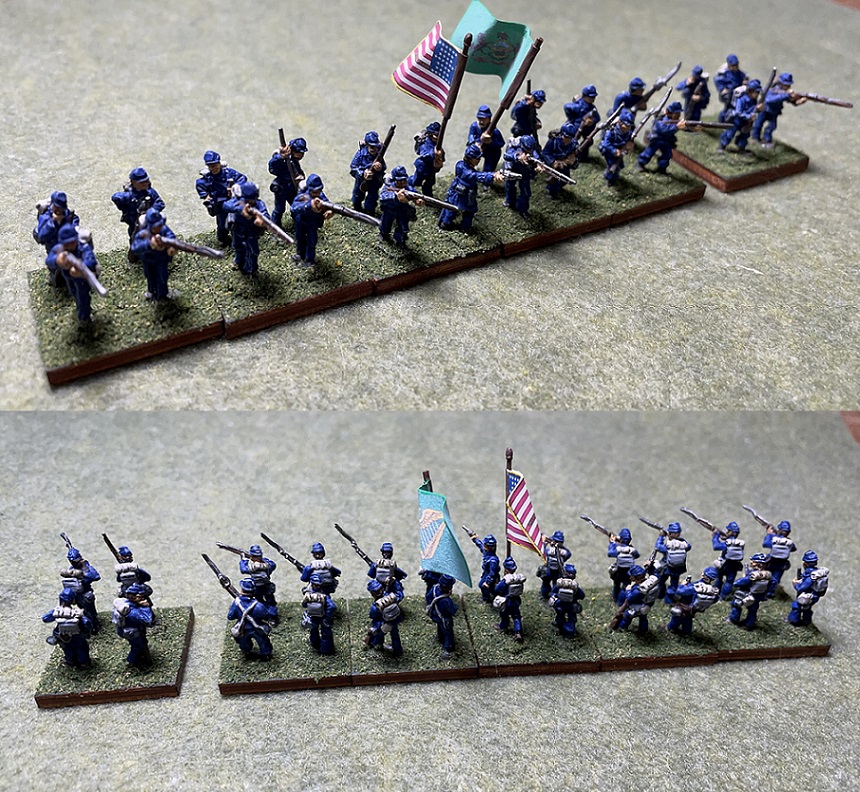The Angle
3 July 1863
I’m of an age now where tackling new rulesets can be a challenge. The ability to digest and retain the details seems to be slipping away, possibly due to my age, but more likely because I already have two dozen rulesets filed away in “the little gray cells” (not to mention a few hundred board games).
About a year ago, some of the folks from the game group approached me about having a go at some horse-and-musket stuff. It’s been a long time, and to be honest I just didn’t feel up for it, especially learning yet another ruleset. Back in the day, we played GDW’s Johnny Reb, which is a decent set, not terrifically complicated but quite detailed and, in my opinion, somewhat cumbersome in places. They advised me that it wouldn’t be a problem as they are using ODGW’s Historical Battle Lines which, they assured me, was easy to learn and they’d help teach me. So here I go, willingly plunging down another rabbit hole.
This past Christmas, I received a copy of Historical Battle Lines as a gift from my son. I would agree, it looks pretty straightforward. The “drop-in” format makes it easy to gradually immerse yourself, and the fact that most of the players I’m joining are already intimately familiar with the mechanics is encouraging. ODGW’s contention that one can play from the “Player’s Quick Reference Card” and only occasionally/rarely consult the rulebook sounds promising. My plan is to learn enough to be dangerous, then pick up the other bits as I go. Sounds do-able…I’ll let you know how it turns out.
For the first clash we decided on a something we here in north-central Maryland and south central Pennsylvania are quite familiar – Gettysburg. For simplicity, we wanted something that was predominantly, but not exclusively, an infantry action fought over relatively simple terrain. Gettysburg offers a multitude of vignettes, including many straight-up infantry slugfests. We’ve decided on giving the epic clash at The Angle a go. Simple, a few thousand troops, a couple hundred yards of nearly wide-open terrain, intersected by a stone wall, and the war possibly hanging in the balance. What could be simpler?
Background
I want to say I’m not a huge fan of Shelby Foote. Don’t get me wrong, the guy was a great writer and he made history eminently readable, but there’s too much “old southern charm” coursing through his story. When he writes about Pickett’s division forming up that hot July afternoon, every man chomping at the bit to take part in this great assault on the center of the Union line, I cringe. It’s a load of rubbish. Following a largely ineffective artillery bombardment (which admittedly they didn’t understand the extent of), those guys were staring out at three quarters of a mile of open ground, advancing into the very teeth of the enemy’s position; they had to have been terrified, as I certainly would have been.
Even worse was the utter stupidity of the whole thing (IMHO). Longstreet appealed to Lee not to go forward, to disengage to fight another day on more favorable ground, but Lee was resolute in his decision. He’d convinced himself that, while both flank attacks the day before had failed, one last great push in the center could throw Meade off the ridge. Guys like Trimble, Pettigrew, Brockenbrough, Davis and others exhorted and led the men forward, while Pickett watched from the Codori farm as his division was destroyed at Lee’s behest.
This game will center on the action occurring across the couple hundred yards of ground running from the infamous “copse of trees” to the 90-degree bend in the stone wall known as “The Angle”, the frontage extending out as far west as the Emmitsburg Pike (the outer range limit of Union rifle fire). The Union side will feature Hays’ and Webb’s infantry, Cowan’s battery and the three guns commanded by Cushing; the Confederates a gaggle of regiments from various brigades.
Likely to go off sometime in August or September, we’ll have a write up and a few pics when we’re done. I’ll share the OOB as soon as that is finalized.
Meanwhile, I’m looking forward to getting a run-through of HBL.

Three photos taken on a hazy morning a few weeks ago: (top)The Angle and monument to Webb's 71st Pennsylvanians; (middle) remains of the stone wall running south from The Angle toward the Copse of Trees; and (bottom) the view west from The Angle to Seminary Ridge, from which the Confederate attack came.
FYI, if you're looking for a good recap of Gettysburg, I highly recommend Edwin Coddington's The Gettysburg Campaign: A Study in Command (1968). It is definitive and sheds many of the romantic notions so many other historians incorporate into their prose. Very readable, it is not only an excellent assessment of the campaign, but provides a glimpse into circumstances of this battle that made it so horrific for commanders (not to mention the foot soldiers).
























